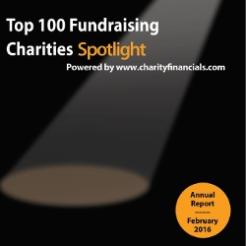Hugh Radojev looks beyond the headline figures from yesterday's Charity Financials report and highlights some of the fastest growing charities over the last five years.
According to the Top 100 Fundraising Charities Spotlight, in the year to March 2015, the top 100 fundraising charities in the UK collectively raised approximately £9.5bn – a record high. Good news, right?
The figure is certainly an impressive one. While the data covers a period of time before the death of Olive Cooke and the subsequent storm of media attacks and self-regulation upheaval; the figure still highlights the important place that the sector holds in society, as well as the ongoing generosity of the British public.
Interestingly, the report highlights some of the fastest growing charities in terms of fundraising income in the UK over the last five years and how exactly those organisations managed it. The data highlights a number of different techniques: including large legacies, viral fundraising campaigns and messages that resonated with the public (see table below).
Perhaps most interestingly, the table highlights the fundraising power of viral campaigns. According to the charity register, the MND Association had a total income of £13m for the year ending 31 January 2011. This figure would not have been enough to secure it a place in the top 100 at the time. The global success of the Ice Bucket Challenge in 2014 has effectively catapulted into its current position of 62 in terms of fundraising income.
The research also highlights the essentially sedentary nature of the top 10 fundraising charities in the UK. In five years, only Save the Children has been able to unseat a charity from the very top table of fundraising income and, even then, STC had been hovering around the top 10 before then for the best part of a decade.
In short, the report suggests that the last financial year was an incredibly good one, particularly for those fundraising charities at the pointy end of the top 100. For those charities still in the top 100, but towards the bottom end of the scale, the report shows that there has been, what it calls, “uneven success rates”.
The report shows that some 40 per cent of the top 100 fell below the overall average of 15 per cent income growth. A third of top 100 charities meanwhile saw negative growth and had lower real fundraising income in 2015 than they did in 2010.
The report also has a somewhat sobering conclusion. The full fallout from Olive Cooke and the ongoing changes to fundraising self-regulation have still yet to be truly quantified. Combined with the prospect of a weakening economic environment, the report this time next year may well be far bleaker reading.
| Name of the organistion | Fast-growing charities 2010-2015 |
| The Art Fund | 255 per cent increase in fundraising income between 2009/10 and 2014/15 through steady membership, a large legacy and campaigns which captured public attention |
| Foundation and Friends of Kew | 80 per cent increase through steady year-on-year growth, with growth in legacies, gifts in kind, voluntary and trust gifts in 2015 |
| ABF The Soldiers Charity | 60 per cent increase, with a big rise in its public fundraising, on the back of the growing public profile in the cause |
| MND Association | 51 per cent increase, with a huge spurt from the Ice Bucket challenge which resulted in £4m donated through text and JustGiving, 770,000 plus donations |
| Teenage Cancer Trust | 47 per cent increase, through general growth in fundraising as well as capturing public imagination through the Stephen’s Story campaign |
| Leonard Cheshire Disability | Growth of 40 per cent achieved through legacy income and expanding trust support for its international work |
| Battersea Dogs and Cats Home | 36 per cent increase in income through legacies, regular and major giving and events, as well as strong growth in overall turnover |
| Islamic Relief | 34 per cent increase reached through Syria and Gaza appeals, and growth in vol income in 2015, from UK donors and Global Islamic Relief |









